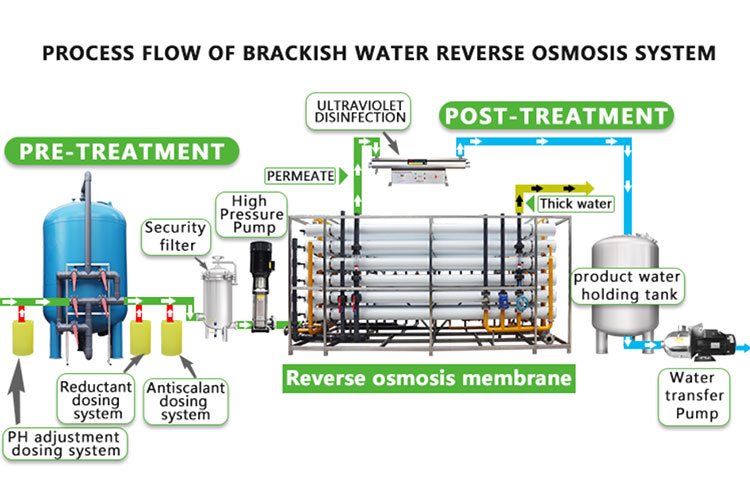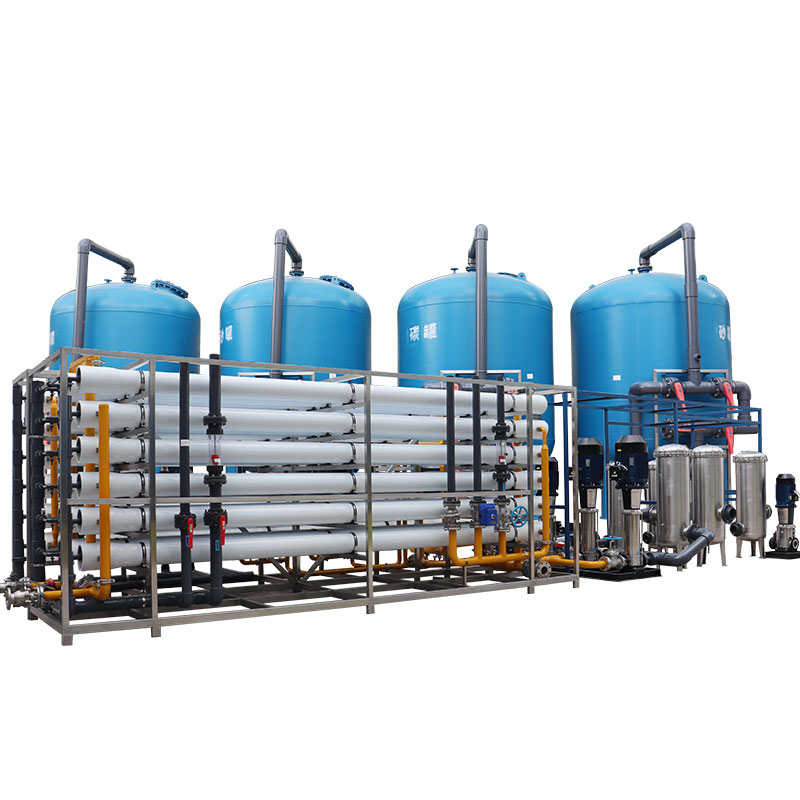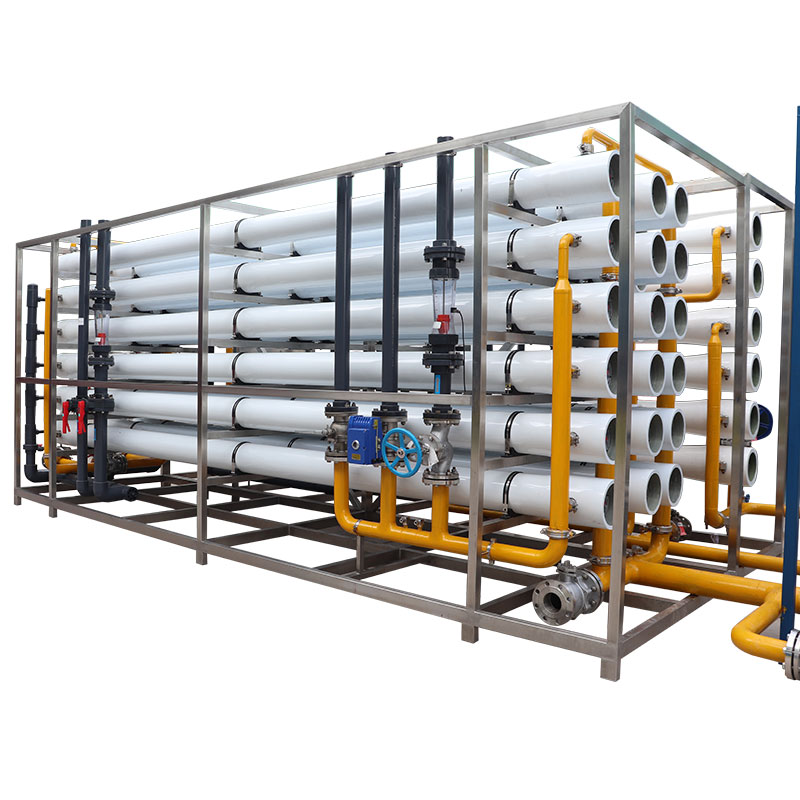Is there a machine that can turn salt water into fresh water?
The concept of seawater desalination technology is not new. Its history can be traced back to ancient times, when people obtained fresh water through evaporation and condensation. However, the development of modern seawater desalination technology began in the mid-20th century. With the improvement of membrane technology and energy efficiency, seawater desalination has gradually become a viable solution.

What is the technology to turn salt water into fresh water?
At present, there are many seawater desalination plants in operation around the world, especially in areas with extremely scarce water resources such as the Middle East and North Africa. The main seawater desalination technologies include reverse osmosis (RO), multi-stage flash evaporation (MSF) and multi-effect distillation (MED). Each technology has its unique advantages and applicable scenarios.
Technology to turn salt water into fresh water-reverse osmosis (RO)
Reverse osmosis technology is currently the most widely used seawater desalination method. Its working principle is to separate water molecules from salt water under high pressure through a semi-permeable membrane, leaving salt and other impurities. The main components of the reverse osmosis system include high-pressure pumps, reverse osmosis membranes, pretreatment devices and energy recovery devices.
1. Efficient energy recovery: Modern reverse osmosis systems are usually equipped with energy recovery devices, which can recycle the energy in concentrated brine for reuse, greatly reducing the total energy consumption of the system.
2. Easy operation: The reverse osmosis system is compactly designed, relatively simple to operate, and easy to maintain.
3. Wide range of applications: Reverse osmosis technology is not only suitable for seawater desalination, but can also be used to treat brackish water and industrial wastewater.
Characteristics of multi-stage flash evaporation (MSF) and multi-effect distillation (MED) technology
Multi-stage flash evaporation and multi-effect distillation are two thermal seawater desalination technologies, which mainly convert salt water into fresh water through evaporation and condensation processes.
1. Multi-stage flash evaporation (MSF): Utilizing the flash evaporation effect of gradually reducing pressure, evaporation and condensation are carried out in sequence in multiple flash chambers to finally obtain fresh water. MSF technology is suitable for large-scale seawater desalination, but its energy consumption is high, and it is usually used in conjunction with power plants to improve thermal efficiency.
2. Multi-effect distillation (MED): Through the combination of multiple evaporation effects and condensation effects, multiple evaporation and desalination of salt water are achieved. The energy consumption of MED technology is lower than that of MSF, but the anti-corrosion requirements of equipment are higher.

Innovation and breakthroughs in new desalination technologies
In recent years, scientists and engineers have been exploring new desalination technologies to further improve efficiency, reduce costs and reduce environmental impact. Here are several promising new technologies:
1. Capacitive deionization (CDI) technology: Use electric fields to adsorb ions in salt water onto electrodes to separate fresh water. This technology has low energy consumption and simple equipment, but currently has a small processing capacity and is suitable for small-scale applications.
2. Graphene oxide membrane: As a new material, graphene's ultra-thin and high-strength properties make it perform well in membrane technology. Graphene oxide membranes have extremely high water permeability and selectivity, which can greatly improve the efficiency of reverse osmosis systems.
3. Solar distillation: Using solar energy as a heat source for distillation is an environmentally friendly and economical method of desalination. Researchers are developing efficient solar energy collection and conversion devices to increase the system's fresh water production.
Application cases of reverse osmosis desalination technology
Desalination technology has been widely used around the world and has achieved some remarkable success cases:
1. Ashkelon Desalination Plant in Israel: As one of the world's largest reverse osmosis desalination plants, the Ashkelon plant can produce about 390,000 cubic meters of fresh water per day, meeting 20% of Israel's national drinking water needs.
2. Jubail Desalination Plant in Saudi Arabia: The Jubail plant uses multi-stage flash evaporation technology to produce about 1 million cubic meters of fresh water per day. It is one of the largest desalination plants in the world and provides a reliable water source for the eastern region of Saudi Arabia.
3. Carlsbad Desalination Plant in California, USA: This desalination plant using reverse osmosis technology can produce about 200,000 cubic meters of fresh water per day, solving the serious water shortage problem in the local area.

What is the future development of reverse osmosis desalination?
Some future development challenges of reverse osmosis desalination:
1. Energy consumption problem: The desalination process consumes a lot of energy, especially reverse osmosis and thermal technology. How to further reduce energy consumption is the focus of future research.
2. Brine discharge: The problem of brine treatment generated during seawater desalination still exists, and improper discharge may have an impact on the marine ecosystem. It is necessary to develop more environmentally friendly brine treatment technology.
3. Equipment corrosion and maintenance: Seawater contains a variety of corrosive substances, which have high requirements for equipment anti-corrosion and high maintenance costs. The application of new materials and anti-corrosion technology will help extend the service life of equipment.
Future development direction of reverse osmosis desalination:
1. New energy combination: Combined with renewable energy such as solar energy and wind energy, reduce energy consumption in the desalination process and achieve more environmentally friendly water treatment solutions.
2. High-efficiency membrane materials: Improve the efficiency and durability of reverse osmosis systems by developing new membrane materials, such as graphene oxide membranes.
3. Miniaturization and modularization: Design miniaturized and modular desalination equipment suitable for homes and small communities, and improve the flexibility and convenience of fresh water acquisition.
Conclusion
Desalination technology that converts salt water into fresh water is an important means to solve the problem of global water shortage. Through continuous innovation and technological breakthroughs, the efficiency and economy of desalination equipment will continue to improve, and the scope of application will be wider.
In the future, with the advancement and promotion of technology, seawater desalination is expected to provide safe and reliable drinking water to more regions and contribute to global sustainable development.






